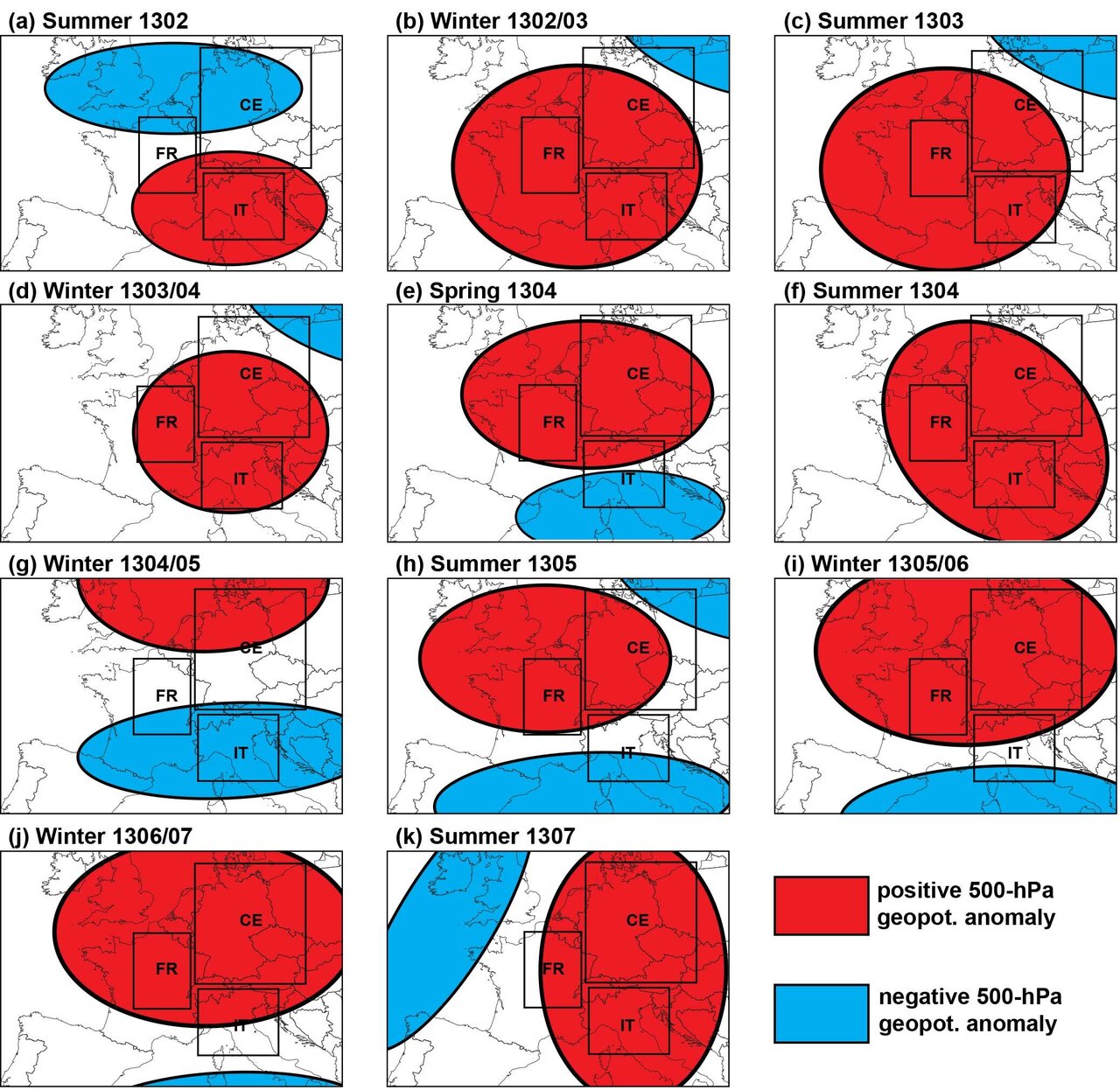Disir
Platinum Member
- Sep 30, 2011
- 28,003
- 9,608
- 910
The transition from the Medieval Warm Period to the Little Ice Age was apparently accompanied by severe droughts between 1302 and 1307 in Europe; this preceded the wet and cold phase of the 1310s and the resulting great famine of 1315-21. In the journal Climate of the Past, researchers from the Leibniz Institutes for the History and Culture of Eastern Europe (GWZO) and Tropospheric Research (TROPOS) write that the 1302-07 weather patterns display similarities to the 2018 weather anomaly, in which continental Europe experienced exceptional heat and drought. Both the medieval and recent weather patterns resemble the stable weather patterns that have occurred more frequently since the 1980s due to the increased warming of the Arctic.
According to the Leibniz researchers' hypothesis based on their comparison of the 1302-07 and 2018 droughts, transitional phases in the climate are always characterized by periods of low variability, in which weather patterns remain stable for a long time. The published study presents preliminary findings of the Freigeist Junior Research Group on the Dantean Anomaly (1309-1321) at the Leibniz Institute for the History and Culture of Eastern Europe (GWZO). Funded by the Volkswagen Stiftung, the group is investigating the rapid climate change in the early 14th century and its effects on late medieval Europe.

 phys.org
I would say that there is a lot of similarities.
phys.org
I would say that there is a lot of similarities.
According to the Leibniz researchers' hypothesis based on their comparison of the 1302-07 and 2018 droughts, transitional phases in the climate are always characterized by periods of low variability, in which weather patterns remain stable for a long time. The published study presents preliminary findings of the Freigeist Junior Research Group on the Dantean Anomaly (1309-1321) at the Leibniz Institute for the History and Culture of Eastern Europe (GWZO). Funded by the Volkswagen Stiftung, the group is investigating the rapid climate change in the early 14th century and its effects on late medieval Europe.

Drought of the century in the Middle Ages—with parallels to climate change today?
The transition from the Medieval Warm Period to the Little Ice Age was apparently accompanied by severe droughts between 1302 and 1307 in Europe; this preceded the wet and cold phase of the 1310s and the resulting great famine of 1315-21. In the journal Climate of the Past, researchers from the...

